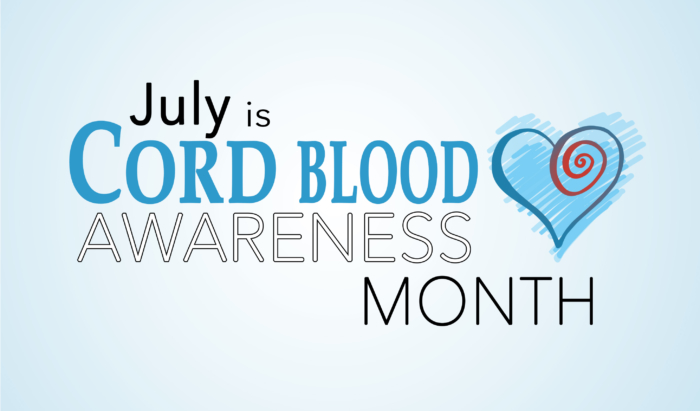Cord blood banking involves the preservation of a baby’s cord blood–the blood that remains inside the umbilical cord and placenta after birth. Usually, the umbilical cord and placenta are discarded with the blood still inside. But cord blood banking is a way to keep and store this valuable resource.
Why Should I Preserve and Store My Baby’s Cord Blood?
Cord blood is medically valuable because it contains hematopoietic stem cells. This type of stem cell can be used to treat certain diseases. Hematopoietic stem cells are different than most cells because while most cells can only make copies of themselves, these stem cells can mature into different types of blood cells.
This type of stem cell is also present in blood and bone marrow. The stem cells in cord blood will match more people than those from bone marrow and stem cells from cord blood are less likely to be rejected by the transplant recipient. It is also easier to collect cord blood than bone marrow.
Hematopoietic stem cells can effectively treat more than 70 types of diseases. These diseases include genetic disorders, neurologic disorders, and immune system diseases. There are also some forms of cancer that have successfully been treated with hematopoietic stem cells, including lymphoma and leukemia.
Stem cells collected from cord blood are used to treat diseases via two different types of transplants:
- Autologous transplants are transplants in which the cord blood collected after birth is used by that same child. This is an uncommon transplant type due to the fact that it cannot treat the kind of diseases cord blood is often used for. This is due to the fact the stem cells have the same genetic makeup of the child.
- Allogenic transplants are transplants in which donated tissues, organs, or cells (in this case, the stem cells in cord blood) come from another person. Sometimes the cells are donated by a family member and sometimes they come from a stranger from a blood bank.
The American College of Obstetricians and Gynecologists can provide you with more detailed information on what makes cord blood valuable and how it is used on this fact sheet.
How is the Cord Blood Collected?
Cord blood collection poses no risk to the baby or mother. It happens after the umbilical cord has been cut so it is safe and pain-free for all involved.
There are two methods used to collect cord blood.
- In the syringe method, blood is drawn from the cord using a syringe, similar to a regular blood draw. The collection should take place shortly after the umbilical cord is cut.
- Using the bag method, the umbilical cord is elevated and the cord blood is drained into a bag.
Bags and syringes are pre-labeled with an ID number to link it to your baby. No matter which method is used, the cord blood collection should take place within the first 15 minutes after birth. The lab needs to process the cord blood within 48 hours of collection.
What Happens to Cord Blood after Collection?
Once cord blood is collected it must be processed. During processing, the cord blood screened and typed. Both the cord blood and the mother’s blood are tested for blood or immune system disorders, genetic disorders and infections before the cord blood is banked.
The blood is then sent to the blood bank where it is “typed” (tested to see which blood type it is). When it is stored, it is entered into a computerized tracking system. That way it can be found and retrieved quickly when it is needed.
Choosing a Cord Blood Bank
When choosing a cord there are several things to consider. You want to choose a reliable and accredited blood bank equipped to store the cord blood properly.
First, you need to decide the type of bank to use. The type of bank you use will depend on if you are donating the cord blood or keeping it yourself. There are two types of cord blood banks
- Public cord banks store cord blood for allogeneic transplants. There is no charge to store cord blood at public banks because you are donating the blood for someone else to use. Sometimes public banks offer something called “directed donation.” In a directed donation you donate the blood to be used for a family member that may benefit from stem cell treatment. Not all public banks offer this and often private blood banks are used for this purpose.
- Private banks store blood that will be used in autologous transplants or for a directed donation to a family member. Private banks charge fees to collect, preserve, and store the cord blood. Sometimes exceptions are made for directed donations, but not always.
Whichever type of blood bank you decide on, make sure you choose an American Association of Blood Banks (AABB) accredited blood bank.
Is Cord Blood Banking Expensive?
If you are using a private bank, cord blood banking does require an investment for the initial fee to have the blood collected, preserved, and initially stored. There is also the ongoing expense of storing the blood in the facility.
The cost of private cord blood banking varies depending on the bank you choose. Often the initial fee is between $900 and $2,100 depending on how long the initial storage period is. Many private cord blood banks offer pre-paid and discount plans to help make cord blood banking more accessible for families that are interested. After the initial fee, annual storage fees are often around $100.
—
At Raleigh OB/GYN we can provide you with education and support throughout your pregnancy. And if there is something more specialized you are interested in, like cord blood banking, we can help direct you to the best resources. We partner with Carolinas Cord Blood Bank (CCBB) which is part of the Duke University School of Medicine and one of the largest public cord blood banks in the world.
To talk to someone on our team about pregnancy or gynecological care, request an appointment online or by calling (919) 876-8225.


